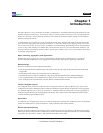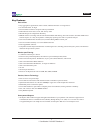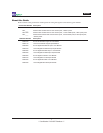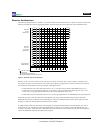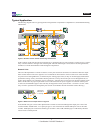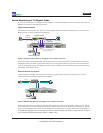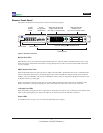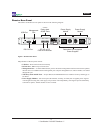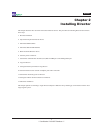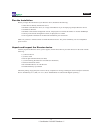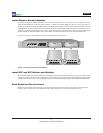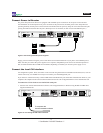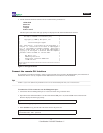
8
*** Condential - DO NOT Distribute ***
Director
In-line Monitoring of 10 Gigabit Links
To create an in-line link on a 10 Gigabit network segment, use and external iBypass Switch or network Tap. These two
methods are explained in the following sections.
iBypass Switch Method
One method for creating a fail-safe, passive in-line 10 Gigabit network connection with Director is to use an external
iBypass Switch, as shown in the following diagram.
Director
Router
Switch
Monitoring tools
10 Gbps
full duplex
iBypass Switch
Purple arrows show trac
ow in one direction
www.netoptics.com
1
2
B
A
A B
ON
OFF
iBypass Switch method for 10 Gigabit in-line network connectionFigure 4:
In this case, trafc ows from the router, into the iBypass Switch, down to the Director, through Director, back up to
the iBypass Switch, and nally to the switch. It also travels in the opposite direction. If power is removed from Direc-
tor or from the iBypass Switch, the iBypass Switch fails open, creating a passive connection that keeps trafc owing
between the router and the switch.
External Network Tap method
Another method for creating a fail-safe, passive in-line 10 Gigabit network connection with Director is to use an
external network Tap, as shown in the following diagram.
Director
LC Fiber Tap
Router
Switch
Monitoring tools
10 Gbps
10 Gbps
www.netoptics.com
A B
External Tap method for Figure 5: 10 Gigabit in-line network connection
In this case, trafc ows from the router, through the external Tap, to the switch. The Tap is totally passive, with no
power needed for its operation. Optical splitters send a portion of the link light to the Director for monitoring. The Tap
produces two half-duplex data streams, so both of Director's 10 Gigabit ports are used to monitor full-duplex trafc. A
10 GigaBit Port Aggregator can be used instead of a Tap to send the full-duplex link trafc to a single Director 10 Gigabit
port, assuming the aggregated full-duplex trafc is 10 Gbps or less.




